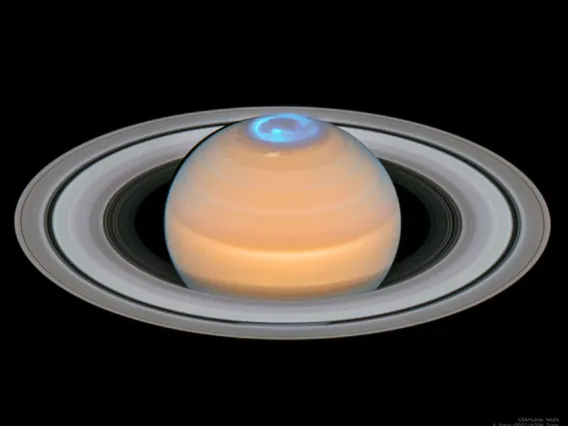
What Makes Saturn's Upper Atmosphere So Hot
New mapping of the giant planet's upper atmosphere reveals a likely reason why it's so hot.
What Makes Saturn's Upper Atmosphere So Hot
×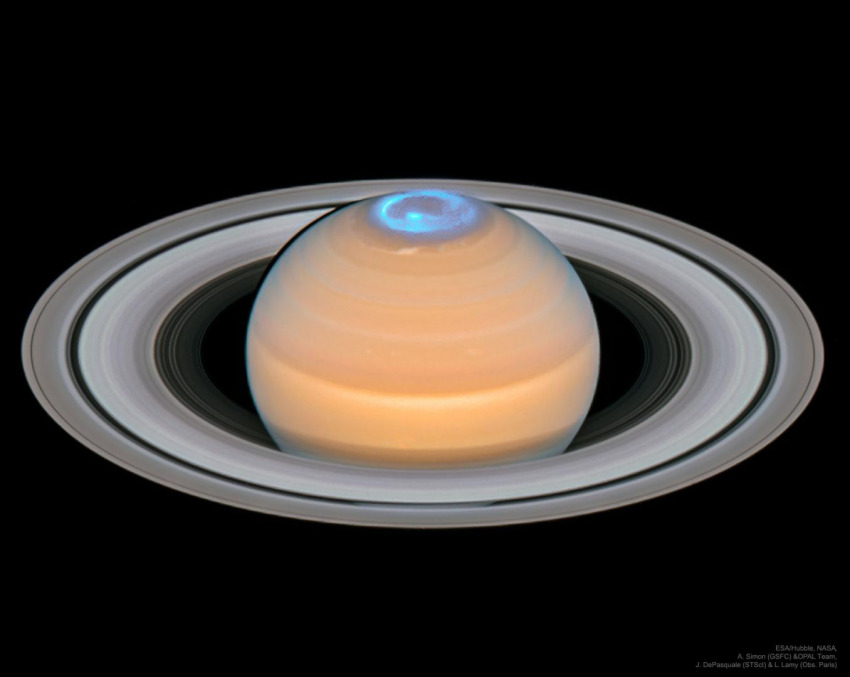
NASA Jet Propulsion Laboratory and University Communications - April 6, 2020
The upper layers in the atmospheres of gas giants – Saturn, Jupiter, Uranus and Neptune – are hot, just like Earth's. But unlike Earth, the sun is too far from these outer planets to account for the high temperatures. Their heat source has been one of the great mysteries of planetary science.
New analysis of data from NASA's Cassini spacecraft finds a viable explanation for what's keeping the upper layers of Saturn, and possibly the other gas giants, so hot: auroras at the planet's north and south poles. Electric currents, triggered by interactions between solar winds and charged particles from Saturn's moons, spark the auroras and heat the upper atmosphere. As with Earth's northern lights, studying auroras tells scientists what's going on in the planet's atmosphere.
The work, published today in Nature Astronomy, is the most complete mapping yet of both temperature and density of a Saturn's upper atmosphere – a region that has been poorly understood.
"Understanding the dynamics really requires a global view. This dataset is the first time we've been able to look at the upper atmosphere from pole to pole while also seeing how temperature changes with depth," said Zarah Brown, lead author of the study and a graduate student in the University of Arizona Lunar and Planetary Laboratory.
By building a complete picture of how heat circulates in the atmosphere, scientists are better able to understand how auroral electric currents heat the upper layers of Saturn's atmosphere and drive winds. The global wind system can distribute this energy, which is initially deposited near the poles toward the equatorial regions, heating them to twice the temperatures expected from the sun's heating alone.
"The results are vital to our general understanding of planetary upper atmospheres and are an important part of Cassini's legacy," said study co-author Tommi Koskinen, a member of Cassini's Ultraviolet Imaging Spectograph team. "They help address the question of why the uppermost part of the atmosphere is so hot, while the rest of the atmosphere – due to the large distance from the sun – is cold."
Managed by NASA's Jet Propulsion Laboratory in Southern California, Cassini was an orbiter that observed Saturn for more than 13 years before exhausting its fuel supply. The mission plunged it into the planet's atmosphere in September 2017, in part to protect its moon Enceladus, which Cassini discovered might hold conditions suitable for life. But before its plunge, Cassini performed 22 ultra-close orbits of Saturn, a final tour called the Grand Finale.
It was during the Grand Finale that the key data was collected for the new temperature map of Saturn's atmosphere. For six weeks, Cassini targeted several bright stars in the constellations of Orion and Canis Major as they passed behind Saturn. As the spacecraft observed the stars rise and set behind the giant planet, scientists analyzed how the starlight changed as it passed through the atmosphere.
Measuring the density of the atmosphere gave scientists the information they needed to find the temperatures. Density decreases with altitude, and the rate of decrease depends on temperature. They found that temperatures peak near the auroras, indicating that auroral electric currents heat the upper atmosphere.
Density and temperature measurements together helped scientists figure out wind speeds. Understanding Saturn's upper atmosphere, where planet meets space, is key to understanding space weather and its impact on other planets in our solar system and exoplanets around other stars.
"Even though thousands of exoplanets have been found, only the planets in our solar system can be studied in this kind of detail. Thanks to Cassini, we have a more detailed picture of Saturn's upper atmosphere right now than any other giant planet in the universe," Brown said.
The Cassini-Huygens mission is a cooperative project of NASA, the European Space Agency and the Italian Space Agency. NASA's Jet Propulsion Laboratory, or JPL, a division of Caltech in Pasadena, manages the mission for NASA's Science Mission Directorate in Washington. JPL designed, developed and assembled the Cassini orbiter.
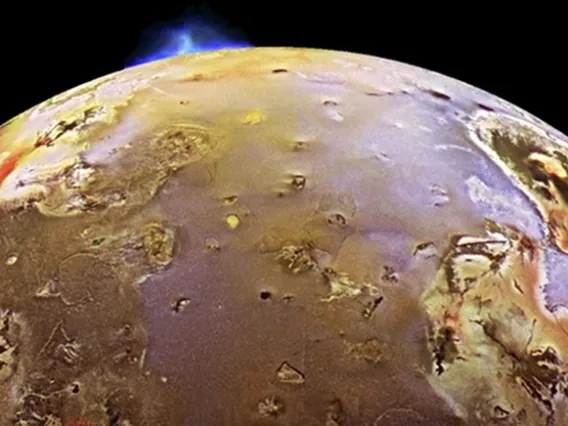
UArizona-Led Mission to Io Selected as Finalist for NASA Discovery Program
If selected as the winner, the spacecraft mission to Jupiter's volcanic, vibrant moon will determine whether a magma ocean lurks beneath its surface.
UArizona-Led Mission to Io Selected as Finalist for NASA Discovery Program
×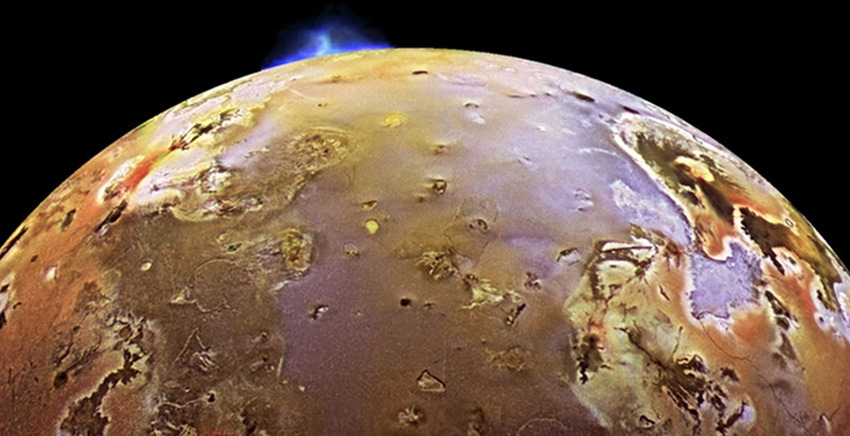
By Makayla Mace, University Communications - February 13, 2020
A University of Arizona-led mission proposal to one of Jupiter's moons is among the four finalists for the next $500 million Discovery mission, NASA announced today. The Discovery Program funds midsize principal-investigator-led spacecraft missions designed to unlock the mysteries of the solar system and our origins.
The four finalists will now embark on a one-year study before NASA expects to make its final selection in 2021.
If selected, the Io Volcano Observer, or IVO, mission will orbit Jupiter and make 10 close flybys of its moon Io – the most volcanically active world in the solar system – to determine if the moon has a magma ocean hidden beneath its vibrant, pockmarked surface.
"IVO will revolutionize our understanding of a truly spectacular, volcanically active world, with volcanic eruption scales seen on Earth only during mass extinctions," said Alfred McEwen, IVO principal investigator and Regents Professor of planetary sciences.
"To become a finalist for the next phase of the NASA Discovery Program is a tremendous accomplishment," said University of Arizona President Robert C. Robbins. "If we are selected in the final round, IVO will become the second University of Arizona-led Discovery mission following the Phoenix Mars Lander, and the third University of Arizona-led NASA planetary mission, following the current OSIRIS-REx mission. The University of Arizona has a long history of space research that began with mapping the moon and has included most NASA planetary missions. This is a phenomenal step for our continuing leadership in space exploration."
The mission would carry a suite of science experiments to map Io's surface, measure its heat flow, monitor volcanic activity, measure the composition of surface lavas and gases erupting from Io, and measure the magnetic and gravitational fields near Io that inform us about the internal structure and distribution of magma.
"Magma oceans were common among the terrestrial planets – Mercury, Venus, Earth, Mars and the moon – soon after the planets formed," McEwen said, "and are an integral piece of planet formation and evolution. They are responsible for the formation of metal cores and degassing to produce the planet's oceans and atmosphere."
These magma oceans cooled and solidified billions of years ago, but great quantities of magma are currently produced in Io from tidal heating as it is stretched and squished by its gravitational dance with the giant Jupiter and sister moons, changing its shape every 42-hour orbit.
The tidal heating could be so great that it sustains an entire magma ocean. Or Io may lack a continuous liquid layer and instead resemble the terrestrial planets soon after their magma oceans solidified. Either way, Io can inform us about ancient volcanic and tectonic processes on Earth and other worlds, and about countless exoplanets that may resemble Io, according to McEwen.
"The NASA Discovery Program enables universities like ours to make exquisite use of our remarkable scientists to peer into the formations and workings of planetary bodies, comets and asteroids and truly discover new knowledge that illuminates our place in the universe," said Senior Vice President for Research and Innovation Elizabeth "Betsy" Cantwell. "The discoveries resulting from this program also advance our ability to innovate broadly around space technologies and new entrepreneurial opportunities, opening many more doors for advances that benefit life on Earth."
The IVO spacecraft and several science instruments would be built and managed by the Applied Physics Laboratory. UArizona would lead science operations and the potential development of a camera in collaboration with students. Other key partners are the Jet Propulsion Laboratory for gravity science and spacecraft navigation, the University of California, Los Angeles for magnetometers, the German Aerospace Center for an infrared instrument and the University of Bern in Switzerland for a mass spectrometer.
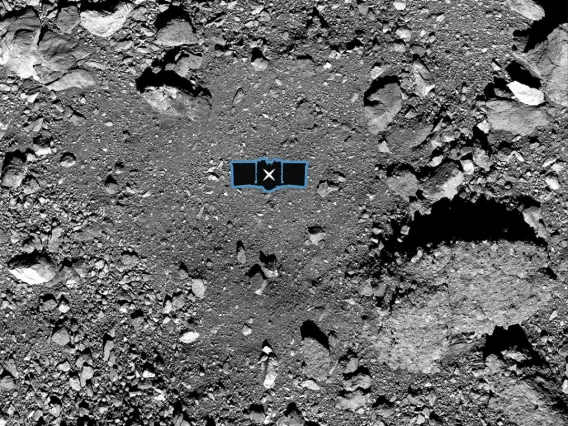
X Marks the Spot: NASA Selects Site for Asteroid Sample Collection
The OSIRIS-REx mission team evaluated data from four candidate sites in order to identify site Nightingale as the best option for the sample collection, with site Osprey named as the backup.
X Marks the Spot: NASA Selects Site for Asteroid Sample Collection
×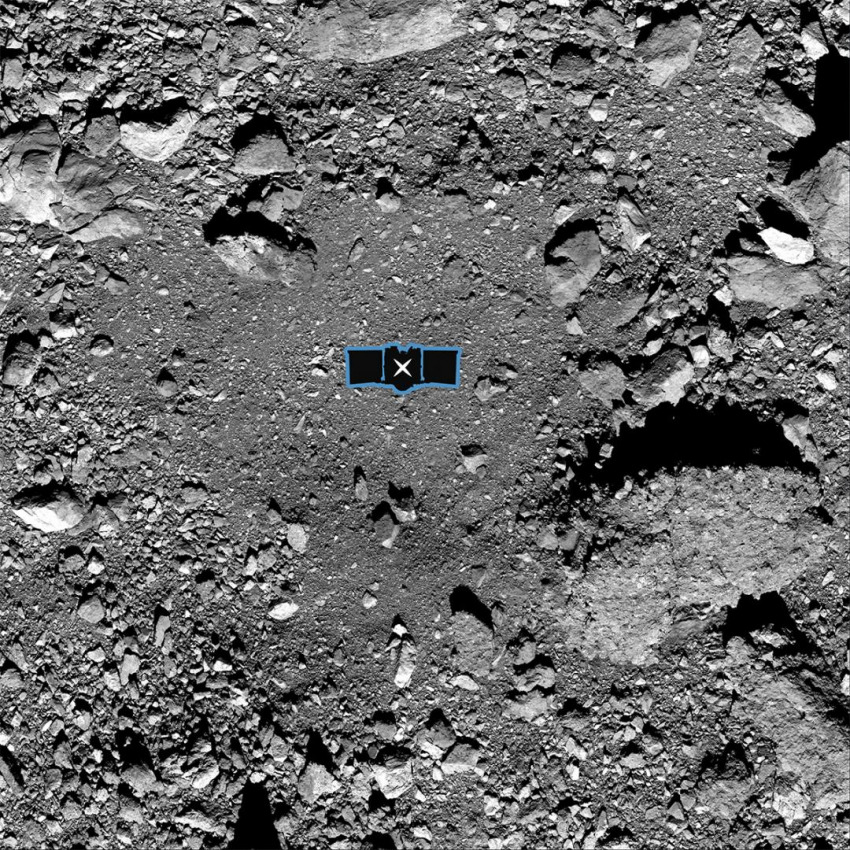
By Brittany Enos, OSIRIS-REx - December 12, 2019
After a year scoping out asteroid Bennu’s boulder-scattered surface, the team leading NASA’s first asteroid sample return mission has officially selected a sample collection site.
The Origins, Spectral Interpretation, Resource Identification, Security, Regolith Explorer, or OSIRIS-REx, mission team concluded a site designated “Nightingale” – located in a crater high in Bennu’s northern hemisphere – is the best spot for the OSIRIS-REx spacecraft to snag its sample.
The OSIRIS-REx team spent the past several months evaluating close-range data from four candidate sites in order to identify the best option for the sample collection. The candidate sites – dubbed Sandpiper, Osprey, Kingfisher and Nightingale – were chosen for investigation because, of all the potential sampling regions on Bennu, these areas pose the fewest hazards to the spacecraft’s safety while still providing the opportunity for great samples to be gathered.
“After thoroughly evaluating all four candidate sites, we made our final decision based on which site has the greatest amount of fine-grained material and how easily the spacecraft can access that material while keeping the spacecraft safe,” said Dante Lauretta, OSIRIS-REx principal investigator at the University of Arizona. “Of the four candidates, site Nightingale best meets these criteria and, ultimately, best ensures mission success.”
Site Nightingale is located in a northern crater 230 feet (70 meters) wide. Nightingale’s regolith – or rocky surface material – is dark, and images show that the crater is relatively smooth. Because it is located so far north, temperatures in the region are lower than elsewhere on the asteroid and the surface material is well-preserved. The crater also is thought to be relatively young, and the regolith is freshly exposed. This means the site would likely allow for a pristine sample of the asteroid, giving the team insight into Bennu’s history.
Although Nightingale ranks the highest of any location on Bennu, the site still poses challenges for sample collection. The original mission plan envisioned a sample site with a diameter of 164 feet (50 m). While the crater that hosts Nightingale is larger than that, the area safe enough for the spacecraft to touch is much smaller – approximately 52 feet (16 m) in diameter, resulting in a site that is only about one-tenth the size of what was originally envisioned This means the spacecraft has to very accurately target Bennu’s surface. Nightingale also has a building-size boulder situated on the crater’s eastern rim, which could pose a hazard to the spacecraft while backing away after contacting the site.
The mission also selected site Osprey as a backup sample collection site. The spacecraft has the capability to perform multiple sampling attempts, but any significant disturbance to Nightingale’s surface would make it difficult to collect a sample from that area on a later attempt, making a backup site necessary. The spacecraft is designed to autonomously “wave-off” from the site if its predicted position is too close to a hazardous area. During this maneuver, the exhaust plumes from the spacecraft’s thrusters could potentially disturb the surface of the site, due to the asteroid’s microgravity environment. In any situation where a follow-on attempt at Nightingale is not possible, the team will try to collect a sample from site Osprey instead.
"Bennu has challenged OSIRIS-REx with extraordinarily rugged terrain," said Rich Burns, OSIRIS-REx project manager at NASA’s Goddard Space Flight Center. "The team has adapted by employing a more accurate, though more complex, optical navigation technique to be able to get into these small areas. We'll also arm OSIRIS-REx with the capability to recognize if it is on course to touch a hazard within or adjacent to the site and wave-off before that happens."
With the selection of final primary and backup sites, the mission team will undertake further reconnaissance flights over Nightingale and Osprey, beginning in January and continuing through the spring. Once these flyovers are complete, the spacecraft will begin rehearsals for its "touch-and-go" sample collection event, which is scheduled for August. The spacecraft will depart Bennu in 2021 and is scheduled to return to Earth in September 2023.
NASA’s Goddard Space Flight Center in Greenbelt, Maryland, provides overall mission management, systems engineering, and the safety and mission assurance for OSIRIS-REx. Dante Lauretta of the University of Arizona is the principal investigator, and the University of Arizona also leads the science team and the mission’s science observation planning and data processing. Lockheed Martin Space in Denver built the spacecraft and provides flight operations. Goddard and KinetX Aerospace are responsible for navigating the OSIRIS-REx spacecraft. OSIRIS-REx is the third mission in NASA’s New Frontiers Program, which is managed by NASA’s Marshall Space Flight Center in Huntsville, Alabama, for the agency’s Science Mission Directorate in Washington.
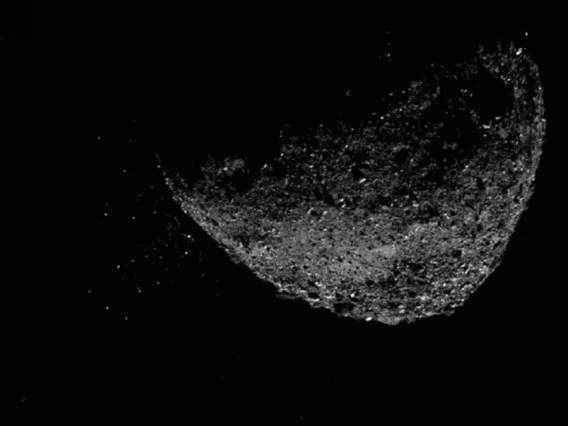
Explaining Bennu’s Mysterious Particle Events
NASA's OSIRIS-REx science team has identified three possible explanations for the particles that asteroid Bennu is tossing into space.
Explaining Bennu’s Mysterious Particle Events
×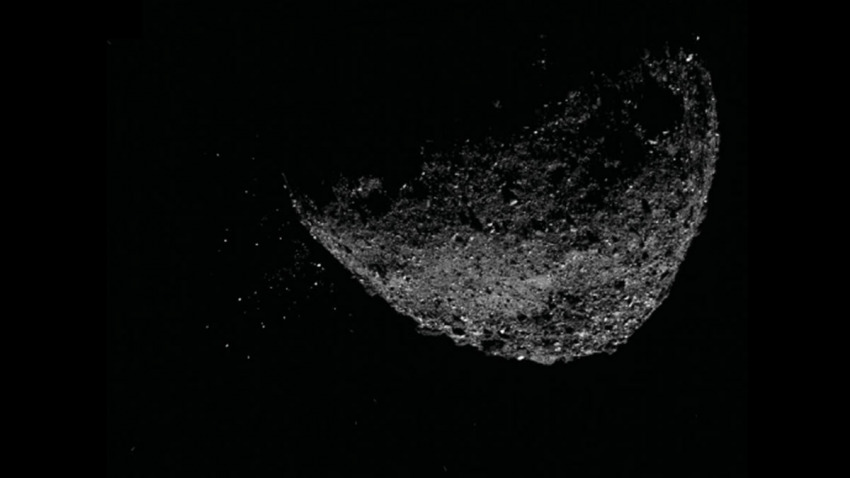
By Erin Morton, OSIRIS-REx - December 5, 2019
Shortly after NASA’s OSIRIS-REx spacecraft arrived at asteroid Bennu, an unexpected discovery by the mission’s science team revealed that the asteroid could be active, or consistently discharging particles into space. The ongoing examination of Bennu and the sample of it that will eventually be returned to Earth, could potentially shed light on why this intriguing phenomenon is occurring.
The OSIRIS-REx team first observed a particle ejection event in images captured by the spacecraft’s navigation cameras taken on Jan. 6, just a week after the spacecraft entered its first orbit around Bennu. At first glance, the particles appeared to be stars behind the asteroid, but on closer examination, the team realized that the asteroid was ejecting material from its surface. After concluding that these particles did not compromise the spacecraft’s safety, the mission began dedicated observations in order to fully document the activity.
“Among Bennu’s many surprises, the particle ejections sparked our curiosity, and we’ve spent the last several months investigating this mystery,” said Dante Lauretta, OSIRIS-REx principal investigator at the University of Arizona. “This is a great opportunity to expand our knowledge of how asteroids behave.”
After studying the results of the observations, the mission team released their findings in a Science paper published Dec. 6. The team observed the three largest particle ejection events on Jan. 6 and 19, and Feb. 11, and concluded that the events originated from different locations on Bennu’s surface. The first event originated in the southern hemisphere, and the second and third events occurred near the equator. All three events took place in the late afternoon on Bennu.
The team found that, after ejection from the asteroid’s surface, the particles either briefly orbited Bennu and fell back to its surface or escaped from Bennu into space. The observed particles traveled up to 10 feet (3 meters) per second, and measured from smaller than an inch up to 4 inches (10 cm) in size. Approximately 200 particles were observed during the largest event, which took place on Jan. 6.
The team investigated a wide variety of possible mechanisms that may have caused the ejection events and narrowed the list to three candidates: meteoroid impacts, thermal stress fracturing and released of water vapor.
Meteoroid impacts are common in the deep space neighborhood of Bennu, and it is possible that these small fragments of space rock could be hitting Bennu where OSIRIS-REx is not observing it, shaking loose particles with the momentum of their impact.
The team also determined that thermal fracturing is another reasonable explanation.
Bennu’s surface temperatures vary drastically over its 4.3-hour rotation period. Although it is extremely cold during the night hours, the asteroid’s surface warms significantly in the mid-afternoon, which is when the three major events occurred. As a result of this temperature change, rocks may begin to crack and break down, and eventually particles could be ejected from the surface. This cycle is known as thermal stress fracturing.
Water release may also explain the asteroid’s activity. When Bennu’s water-locked clays are heated, the water could begin to release and create pressure. It is possible that as pressure builds in cracks and pores in boulders where absorbed water is released, the surface could become agitated, causing particles to erupt.
But nature does not always allow for simple explanations.
"It could be that more than one of these possible mechanisms are at play," said Steve Chesley, an author on the paper and Senior Research Scientist at NASA's Jet Propulsion Laboratory in Pasadena, California. "For example, thermal fracturing could be chopping the surface material into small pieces, making it far easier for meteoroid impacts to launch pebbles into space."
If thermal fracturing, meteoroid impacts, or both, are in fact the causes of these ejection events, then this phenomenon is likely happening on all small asteroids, as they all experience these mechanisms. However, if water release is the cause of these ejection events, then this phenomenon would be specific to asteroids that contain water-bearing minerals, like Bennu.
Bennu’s activity presents larger opportunities once a sample is collected and returned to Earth for study. Many of the ejected particles are small enough to be collected by the spacecraft’s sampling mechanism, meaning that the returned sample may possibly contain some material that was ejected and returned to Bennu’s surface. Determining that a particular particle had been ejected and returned to Bennu might be a scientific feat similar to finding a needle in a haystack.
The material returned to Earth from Bennu, however, will almost certainly increase the understanding of asteroids and the ways they are both different and similar, even as the particle ejection phenomenon continues to be a mystery whose clues will also return home with in the form of data and further material for study.
Sample collection is scheduled for summer 2020, and the sample will be delivered to Earth in September 2023.
NASA’s Goddard Space Flight Center in Greenbelt, Maryland provides overall mission management, systems engineering, and the safety and mission assurance for OSIRIS-REx. Dante Lauretta of the University of Arizona is the principal investigator, and the University of Arizona also leads the science team and the mission’s science observation planning and data processing. Lockheed Martin Space in Denver built the spacecraft and is providing flight operations. Goddard and KinetX Aerospace are responsible for navigating the OSIRIS-REx spacecraft. OSIRIS-REx is the third mission in NASA’s New Frontiers Program, which is managed by NASA’s Marshall Space Flight Center in Huntsville, Alabama, for the agency’s Science Mission Directorate in Washington.
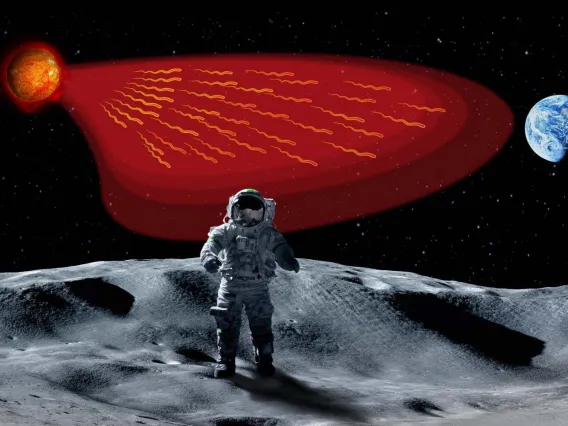
First Results from Spacecraft Exploring Sun
The sun is revealing itself in dramatic detail and shedding light on how other stars may form and behave throughout the universe. LPL researchers involved in the mission report exciting findings from the Parker Solar Probe's first close encounters with our very own star.
First Results from Spacecraft Exploring Sun
×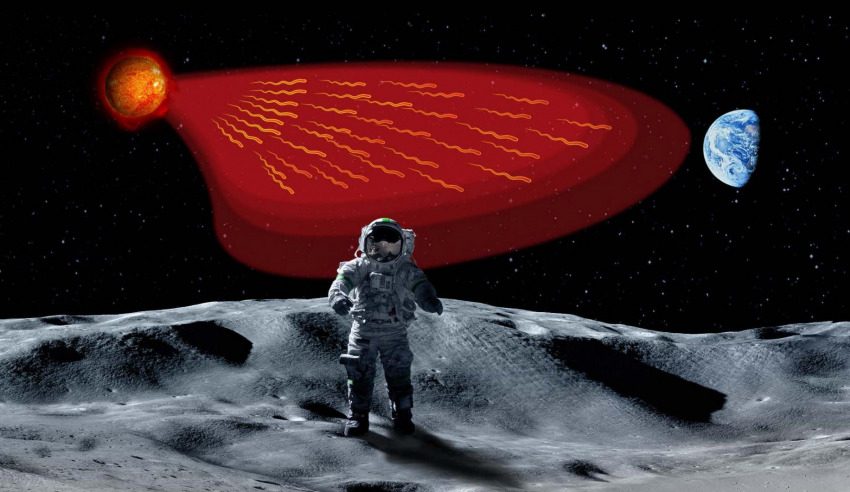
By NASA and Daniel Stolte, University Communications - December 5, 2019
No other spacecraft has traveled faster and closer to the sun than NASA's Parker Solar Probe. The spacecraft is enduring scorching temperatures to gather data, which are being shared for the first time in four new papers that illuminate previously unknown and only-theorized characteristics of our volatile celestial neighbor.
The information Parker has uncovered about how the sun constantly ejects material and energy will help scientists rewrite the models they use to understand and predict the space weather around our planet, and understand the process by which stars are created and evolve. It also will be vital to protecting astronauts and technology in space.
Four papers, available online from the journal Nature, describe Parker’s unprecedented near-sun observations through two record-breaking close flybys, which exposed the spacecraft to intense heat and radiation. They reveal new insights into the processes that drive the solar wind – the constant outflow of hot, ionized gas that streams outward from the sun and fills up the solar system – and how the solar wind couples with the sun's rotation. Through these flybys, the mission also has examined the dust in the environment of the sun's atmosphere, or corona, and spotted particle acceleration events so small that they are undetectable from Earth, which is nearly 93 million miles from the sun.
During its initial flybys, Parker studied the sun from a distance of about 15 million miles. That is already closer to the sun than Mercury, but the spacecraft will get even closer in the future, as it travels at more than 213,000 mph, faster than any previous spacecraft.
Among the findings are new understandings of how the sun's constant outflow of solar wind behaves. Seen near Earth, the solar wind plasma appears to be a relatively uniform flow – one that can interact with our planet's natural magnetic field and cause space weather effects that interfere with technology. Instead of that flow, near the sun, Parker's observations reveal a dynamic and highly structured system. For the first time, scientists are able to study the solar wind from its source, the corona, similar to how one might observe the stream that serves as the source of a river. This provides a much different perspective as compared to studying the solar wind were its flow impacts Earth.
"By the time it gets to Earth, the solar wind is relatively smooth and well behaved, but close to the sun, it appears to be much more dynamic," says Kristopher Klein, an assistant professor in the Lunar and Planetary Laboratory at the University of Arizona. "These local measurements of the solar wind represent the first steps into the region where the solar wind is still quite choppy and hasn't been smoothed out yet."
Klein is one of several scientists affiliated with the mission who are especially interested in studying the solar wind close to the sun, as it may bear signatures of whatever mechanism is heating the sun's atmoshpere, or corona, to a million degrees. How this happens is still a mystery that can't be studied by measuring the near-Earth solar wind.
Switchbacks
One type of event in particular caught the attention of the science teams – flips in the direction of the magnetic field, which flows out from the sun. These reversals – dubbed "switchbacks" – appear to be a very common phenomenon in the solar wind flow inside the orbit of Mercury, but not any farther from the sun, making them undetectable without flying directly through that solar wind the way Parker has.
During a switchback, the magnetic field whips back on itself until it is pointed almost directly back at the sun. These switchbacks, along with other observations of the solar wind, may provide early clues about what mechanisms heat and accelerate the solar wind.
Rotating Wind
In a separate publication, based on measurements by the Solar Wind Electrons Alphas and Protons, or SWEAP, instrument, researchers found surprising clues as to how the sun’s rotation affects the outflow of the solar wind.
Near Earth, the solar wind flows past our planet as if it travels initially in almost straight lines – or "radially," like spokes on a bicycle wheel – out from the sun in all directions. But the sun rotates as it releases the solar wind, and before it breaks free, the solar wind is expected to get a push in sync with the sun's rotation. The further out the solar wind continues to rotate with the sun, the faster it should go, Klein explains. As Parker ventured to a distance of around 20 million miles from the sun, researchers obtained their first observations of this effect.
"Think of children on a merry-go-round or playing crack-the-whip," says Klein, who co-authored the report. "We have theories for how far from the sun the solar wind should continue to rotate, and this distance controls how quickly the sun's rotation slows down due to a loss of angular momentum. As our sun is the only star where we can capture such measurements in close proximity, this data will be very important for describing the evolution of stars throughout the universe."
Dust in the Wind
Parker also observed the first direct evidence of dust starting to thin out around 7 million miles from the sun – an effect that has been theorized for nearly a century, but has been impossible to measure until now. These observations were made using Parker’s Wide-field Imager for Solar Probe, or WISPR, instrument, at a distance of about 4 million miles from the sun.
Scientists have long suspected that close to the sun, this dust would be heated to high temperatures, turning it into a gas and creating a dust-free region around the star. At the observed rate of thinning, scientists expect to see a truly dust-free zone beginning at a distance of about 2-3 million miles from the sun, which the spacecraft could observe as early as September 2020, during its sixth flyby. That dust-free zone would signal a place where the material of the dust has been evaporated by the sun’s heat, to become part of the solar wind flying past Earth.
Energetic Particles
Finally, Parker's Integrated Science Investigation of the Sun, or ISʘIS, energetic particle instruments have measured several never-before-seen events so small that all traces of them are lost before they reach Earth. These instruments have also measured a rare type of particle burst with a particularly high ratio of heavier elements, particularly helium, oxygen and iron – suggesting that both types of events may be more common than scientists previously thought.
Solar energetic particle events are important, as they can arise suddenly and lead to space weather conditions near Earth that can be potentially harmful to astronauts. Unraveling the sources, acceleration and transport of solar energetic particles will help us better protect humans in space in the future.
ISʘIS also observed energetic particles associated with an unusually slow-moving coronal mass ejection.
"This is the closest we have ever observed a coronal-mass-ejection related energetic particle event," says Joe Giacalone a Lunar and Planetary Laboratory professor and member of the ISʘIS instrument team. "Parker was about 50 solar radii from the sun at the time.
"We are observing the sun's outer atmosphere where we never have before," he added. "This is exciting. Much of what we have seen was not expected. These initial observations still require some interpretation, which will help us better understand how the sun – and, by extension, other stars – work."
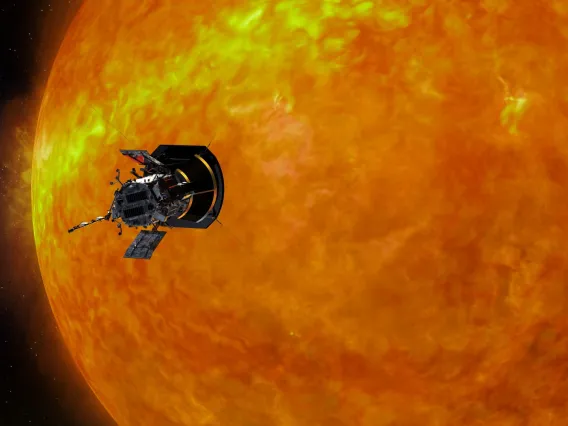
Close Encounter with the Sun
Two LPL researchers involved in NASA's Parker Solar Probe mission are excited about the spacecraft's first close encounters with the sun.
Close Encounter with the Sun
×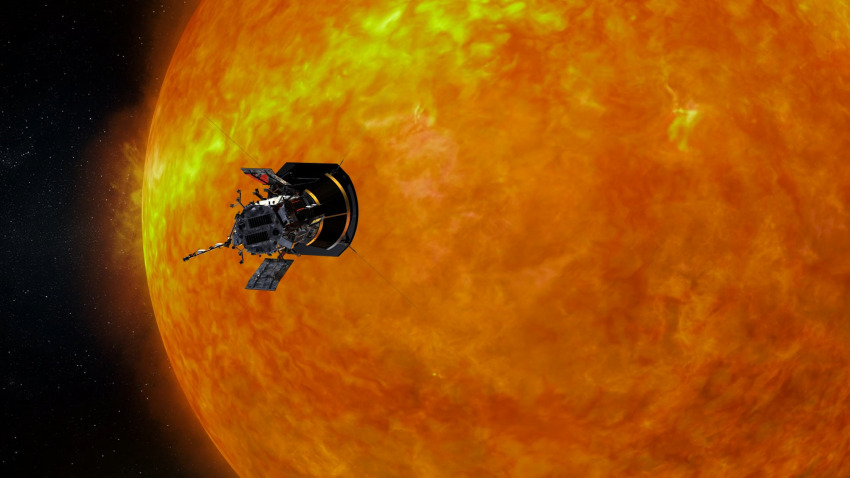
By Daniel Stolte, University Communications - November 18, 2019
NASA’s Parker Solar Probe team released scientific data collected during the spacecraft's first two solar orbits to the general public on Nov. 12. Launched last year on Aug. 12, the Parker Solar Probe is the first attempt to get close to the sun and study the solar wind at its source.
Not unlike the more familiar wind in the Earth's atmosphere, the solar wind can be anything from a gentle particle breeze lighting up the Arctic night sky with green-glowing curtains of the Aurora borealis to violent gusts capable of causing global devastation. Scientists are hoping to find answers to questions that seem fundamental in nature yet have eluded them for decades – for example, where does the solar wind come from, and what causes flares and coronal mass ejections?
Billed by NASA as "humanity's first visit to a star," the Parker Solar Probe will conduct seven fly-bys, during which the spacecraft will approach the sun to within 10 solar radii, far enough to not burn up and close enough to dive into the sun's atmosphere, or corona.
One of the most vexing problems the probe is sent to investigate is the dramatic jump in temperature the solar wind undergoes as it leaves the sun's surface and enters its corona. Across the mere relative thickness of an onion's skin, some unknown mechanism heats the particles, also known as plasma, from about 9,000 degrees Fahrenheit at the surface to 2 million degrees or more in the corona.
According to mission co-investigator Kristopher Klein, an assistant professor in the Lunar and Planetary Laboratory at the University of Arizona, the results are expected to shed light on many fundamental physical processes.
The probe carries several instruments that have made the first local measurements of the solar wind plasma, the sun's extended atmosphere that is blown off the surface and fills the solar system. Klein is a team member for SWEAP, an instrument designed to take measurements the thermal properties of the charged electrons and atoms that are the main components of the solar wind and coronal plasma.
"By combining these measurements, we can work toward constructing a more complete picture of how the solar wind changes as it expands from the solar surface, and what physical processes continue to act to heat this system," Klein said.
"We'll get close enough to where most of the mechanisms that are pushing the particles out are still actively doing that pushing," he said, adding that the mission will provide a better understanding of the space weather around Earth and allow predictions when to send astronauts to Mars or protect a satellite before it gets ripped apart by a radiation burst.
The released encounter data encompasses measurements made during the first two solar encounters, spanning the time between Oct. 31 and Nov. 12, 2018, and March 30 and April 19, 2019, when the spacecraft was within 0.25 AU of the sun, as well as data collected at farther distances. One AU, or astronomical unit, is about 93 million miles, the average distance between the sun and Earth.
Science teams led by principal investigators from partner institutions have been busy poring over the wealth of information collected by the Parker Solar Probe in preparation for the mission's first science results, to be released later this year. The four instrument suites onboard – FIELDS, ISʘIS, SWEAP, and WISPR – have been observing the characteristics of the solar wind (fields, waves, flows, and particles) in the immediate environment surrounding the Sun, called the corona.
With three of 24 planned solar orbits under its belt, the Parker Solar Probe will continue to get closer to the sun in the coming years, eventually swooping to within 4 million miles of the sun's surface, facing heat and radiation like no spacecraft before.
"This is an exciting time to be a heliophysicist," said Lunar and Planetary Laboratory professor Joe Giacalone, who is on the team of ISʘIS, an instrument that detects very energetic particles. "The data that is now publicly available comes from a region of space we have never sampled previously. With many brilliant scientists now poring through this amazing data set, new discoveries about our star are soon coming."
Paying a close visit to the sun also provides an opportunity to learn about phenomena such as other stars, plasma accretion disks around black holes and the interstellar medium, a very low-density plasma that fills the galaxy.
Sending the Parker Solar Probe to the sun might even help with developing plasma on Earth – for example, developing fusion reactors that could someday provide sustainable energy.
"Releasing this data to the public will allow them not only to contribute to the success of the mission along with the scientific community, but also to raise the opportunity for new discoveries to the next level,” said the mission's project scientist Nour E. Raouafi of the Johns Hopkins Applied Physics Laboratory which manages the mission for NASA.
Data can be accessed through the NASA Space Physics Data Facility, the Solar Data Analysis Center, the APL Parker Solar Probe Gateway, and the Science Operation Centers of the four science investigation teams: the University of California, Berkeley; Princeton University; the Harvard-Smithsonian Center for Astrophysics; and the Naval Research Laboratory. The newly released data, in the form of data files and graphical displays, is available for interested public users to manipulate, analyze and plot in any way they choose.
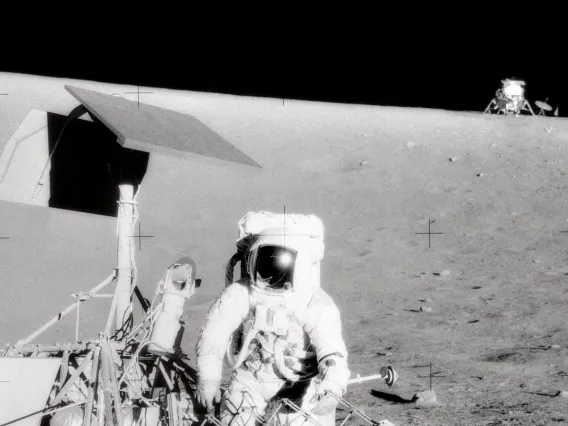
UArizona Moon Researchers Helped NASA Nail Apollo 12 Pinpoint Landing
Lunar and planetary scientist Ewen Whitaker used his incomparable knowledge of lunar geography to help NASA demonstrate a pinpoint landing on the moon with Apollo 12.
UArizona Moon Researchers Helped NASA Nail Apollo 12 Pinpoint Landing
×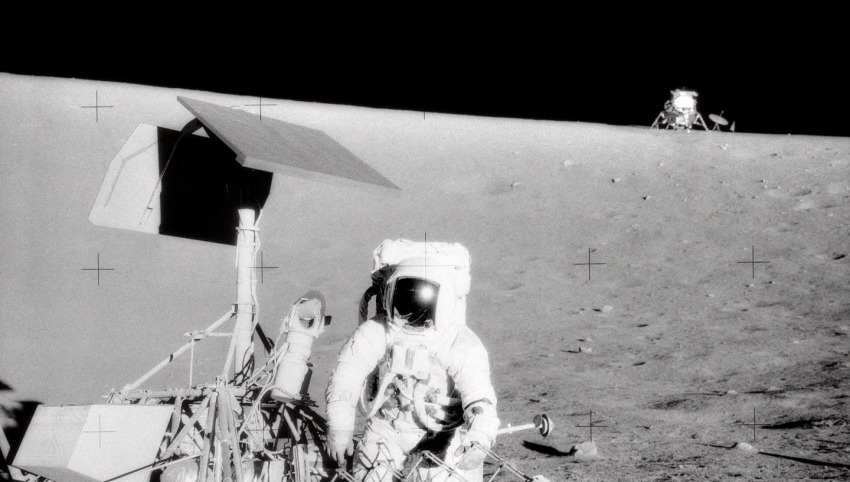
By Mikayla Mace, University Communications - November 13, 2019
The Eagle swooped over the craggy, monochromatic terrain, keenly searching for a smooth landing place. Nothing but an unwelcoming host of craters and boulders streamed below. Pushing its limits, it flew on.
The Apollo 11 Lunar Module touched down in the Sea of Tranquility, in what could be considered one of the greatest human accomplishments. But with its fuel nearly drained, the Eagle landed nearly four miles from the intended landing site. During the next mission, NASA sought to demonstrate a pinpoint landing with “Intrepid,” the Lunar Module of the Apollo 12 mission, which launched 50 years ago on Nov. 14, 1969.
Five days later, two Apollo 12 astronauts – Pete Conrad and Alan Bean – climbed out of Intrepid. They were only 600 feet (about two football fields) from their target location – the landing site of lunar lander Surveyor 3.
The feat was accomplished thanks to the work of University of Arizona planetary scientist Ewen Whitaker and a team led by Gerard Kuiper, the father of modern-day planetary science and founder of the Lunar and Planetary Laboratory.
Finding Surveyor 3
When President John F. Kennedy announced in 1961 that Americans would walk on the surface of the moon by the decade’s end, Whitaker, Kuiper and their team were already imaging and mapping the lunar surface. Their efforts to produce the first photographic lunar atlases of the moon and their partnerships with the university’s geology department and the astrogeology branch of the United States Geological Survey gave them a deep understanding of the moon’s geology and geography.
As a result, the team played a key role in the series of robotic spacecraft that visited the moon ahead of the Apollo missions.
Surveyor 1, the first of seven unmanned lunar landers in a program that ran from June 1966 through January 1968, reached the surface of the moon on June 2, 1966 and sent back panoramic photos from its travels. Surveyor 1’s success reassured the astronauts they would not be swallowed by dust.
When NASA published what they thought was Surveyor 1's correct landing site in the journal Science, Whitaker disagreed. He demonstrated his peerless prowess of lunar geography when he correctly identified Surveyor 1’s landing site after poring over images taken by the Lunar Orbiter and matching lunar features in photos with moon maps. Whitaker published the alternate location in the September issue of Science. His skills earned him the task of locating four more Surveyor landing sites, including Surveyor 3, which landed on the moon in the western Oceanus Procellarum (Ocean of Storms) on April 20, 1967.
To demonstrate a pinpoint landing with Apollo 12, NASA used Whitaker’s location of Surveyor 3 as the target. The location also gave the crew a chance to return parts of the robotic explorer Surveyor 3, which had been on the moon since 1967, for assessment after more than two years in space.
Finding Surveyor 3 was more difficult than Surveyor 1 because Surveyor 3 had landed in a crater, meaning there were limited landmarks to rely upon.
“I’m sure Ewen Whitaker was holding his breath as the astronauts climbed out of the lunar module,” said Jim Scotti, an astronomer with SPACEWATCH®, the UArizona group dedicated to detecting near-earth objects. “Surveyor 3 had been in darkness as the Lunar Module came in for a landing.”
Whitaker’s location was so spot on that the astronauts were able to walk to Surveyor 3.
“The iconic image, for me, of Apollo 12 is the astronaut Pete Conrad standing by Surveyor 3 with the lunar lander in the background,” said Tim Swindle, director of the UArizona Lunar and Planetary Laboratory.
Meeting Alan Bean
Scotti has often joked that by becoming a space artist, astronaut Alan Bean, who snapped that iconic image, made up for damaging the sensors of the first color television camera on the moon’s surface when he accidentally pointed it toward the sun.
Luckily, becoming an artist also brought Bean to Tucson – a hub for space art – where he met Whitaker about 30 years after leaving the moon.
Scotti, a space artist himself, was there to witness the first meeting of the two people responsible for the success of Apollo 12.
“Ewen Whitaker and I were in line together to meet Alan Bean,” Scotti said. “He had brought photographs that he used to find Surveyor and was going to ask Bean to sign them. When he eventually did, it was like watching two best friends chatting back and forth like they’d known each other for years.”

Mysteries Behind Interstellar Buckyballs Finally Answered
Mimicking conditions thought to exist around dying stars, researchers discovered a mechanism that could explain why planetary nebulae are teeming with complex carbon molecules.
Mysteries Behind Interstellar Buckyballs Finally Answered
×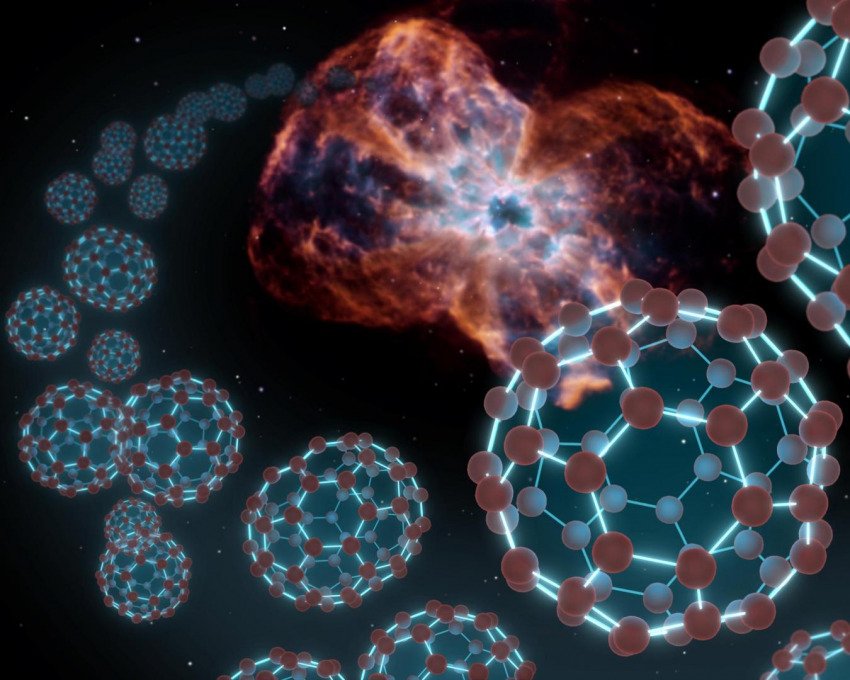
By Rachel Abraham, NASA Space Grant Science Writing Intern, University Communications - November 13, 2019
Scientists have long been puzzled by the existence of so-called "buckyballs" – complex carbon molecules with a soccer-ball-like structure – throughout interstellar space. Now, a team of researchers from the University of Arizona has proposed a mechanism for their formation in a study published in the Astrophysical Journal Letters.
Carbon 60, or C60 for short, whose official name is Buckminsterfullerene, comes in spherical molecules consisting of 60 carbon atoms organized in five-membered and six-membered rings. The name “buckyball” derives from their resemblance to the architectural work of Richard Buckminster Fuller, who designed many dome structures that look similar to C60. Their formation was thought to only be possible in lab settings until their detection in space challenged this assumption.
For decades, people thought interstellar space was sprinkled with lightweight molecules only: mostly single atoms, two-atom molecules and the occasional nine or 10-atom molecules. This was until massive C60 and C70 molecules were detected a few years ago.
Researchers were also surprised to find that that they were composed of pure carbon. In the lab, C60 is made by blasting together pure carbon sources, such as graphite. In space, C60 was detected in planetary nebulae, which are the debris of dying stars. This environment has about 10,000 hydrogen molecules for every carbon molecule.
"Any hydrogen should destroy fullerene synthesis," said astrobiology and chemistry doctoral student Jacob Bernal, lead author of the paper. "If you have a box of balls, and for every 10,000 hydrogen balls you have one carbon, and you keep shaking them, how likely is it that you get 60 carbons to stick together? It’s very unlikely."
Bernal and his co-authors began investigating the C60 mechanism after realizing that the transmission electron microscope, or TEM, housed at the Kuiper Materials Imaging and Characterization Facility at UArizona, was able to simulate the planetary nebula environment fairly well.
The TEM, which is funded by the National Science Foundation and NASA, has a serial number of "1" because it is the first of its kind in the world with its exact configuration. Its 200,000-volt electron beam can probe matter down to 78 picometers – scales too small for the human brain to comprehend – in order to see individual atoms. It operates under a vacuum with extremely low pressures. This pressure, or lack thereof, in the TEM is very close to the pressure in circumstellar environments.
"It’s not that we necessarily tailored the instrument to have these specific kinds of pressures," said Tom Zega, associate professor in the UArizona Lunar and Planetary Lab and study co-author. "These instruments operate at those kinds of very low pressures not because we want them to be like stars, but because molecules of the atmosphere get in the way when you’re trying to do high-resolution imaging with electron microscopes."
The team partnered with the U.S. Department of Energy’s Argonne National Lab, near Chicago, which has a TEM capable of studying radiation responses of materials. They placed silicon carbide, a common form of dust made in stars, in the low-pressure environment of the TEM, subjected it to temperatures up to 1,830 degrees Fahrenheit and irradiated it with high-energy xenon ions.
Then, it was brought back to Tucson for researchers to utilize the higher resolution and better analytical capabilities of the UArizona TEM. They knew their hypothesis would be validated if they observed the silicon shedding and exposing pure carbon.
"Sure enough, the silicon came off, and you were left with layers of carbon in six-membered ring sets called graphite," said co-author Lucy Ziurys, Regents Professor of astronomy, chemistry and biochemistry. "And then when the grains had an uneven surface, five-membered and six-membered rings formed and made spherical structures matching the diameter of C60. So, we think we’re seeing C60."
This work suggests that C60 is derived from the silicon carbide dust made by dying stars, which is then hit by high temperatures, shockwaves and high energy particles , leeching silicon from the surface and leaving carbon behind. These big molecules are dispersed because dying stars eject their material into the interstellar medium – the spaces in between stars – thus accounting for their presence outside of planetary nebulae. Buckyballs are very stable to radiation, allowing them to survive for billions of years if shielded from the harsh environment of space.
"The conditions in the universe where we would expect complex things to be destroyed are actually the conditions that create them," Bernal said, adding that the implications of the findings are endless.
"If this mechanism is forming C60, it’s probably forming all kinds of carbon nanostructures," Ziurys said. "And if you read the chemical literature, these are all thought to be synthetic materials only made in the lab, and yet, interstellar space seems to be making them naturally."
If the findings are any sign, it appears that there is more the universe has to tell us about how chemistry truly works.
This work was supported by the National Science Foundation (AST-1515568, 1531243 and AST-1907910), NASA (NNX15AD94G, NNX15AJ22G, NNX16A31G, NNX12AL47G and 80NSSC19K0509), the National Institutes of Health (R25GM062584), the U.S. Department of Energy (DE-AC07-051D14517) and the Sloan Foundation Baseline Scholars Program.

The Origins of Buckyballs in Space
The spectroscopic fingerprints of buckyballs have been observed in space, but questions remain about how these large molecules form. Laboratory experiments have revealed a possible mechanism.
The Origins of Buckyballs in Space
×By Alessandra Candian, Nature - October 24, 2019
Formation of Interstellar C60 from Silicon Carbide Circumstellar Grains
J. J. Bernal1, P. Haenecour2, J. Howe3, T. J. Zega2,4, S. Amari5, and L. M. Ziurys1,6,7
The Astrophysical Journal Letters, Volume 883, Number 2
A long-standing mystery in astronomical spectroscopy concerns diffuse interstellar bands, a family of absorption features seen in the spectra of the interstellar medium of the Milky Way and of other galaxies. First observed almost 100 years ago, the origin of any of the bands was unknown until 2015, when four of them were assigned1 to the cation of buckministerfullerene (C60+; the uncharged molecule is often referred to simply as fullerene, or colloquially as a buckyball). Fullerene and its analogue, C70, are by far the biggest molecules detected in space, raising the question of how such large species can form in those rarified conditions. Researchers have suggested that fullerene forms in the outflows of old, carbon-rich stars known as asymptotic giant branch stars2 — the temperatures and densities of these outflows promote chemistry similar to that of combustion. This could lead to the formation of soot, which can contain fullerene-like structures. Writing in Astrophysical Journal Letters, Bernal et al.3 propose a very different formation route for fullerene.
The carbon atoms in fullerene are arranged in the shape of a football, a molecular structure that is remarkably stable but also difficult to construct. Fullerene has been made in the laboratory in experiments designed to probe the chemistry that occurs in carbon-rich stars: carbon in the form of graphite was vaporized into a high-density helium flow, producing carbon clusters4. The discovery that fullerene was among the reaction products led to the award of the Nobel Prize in Chemistry to Harry Kroto, Richard Smalley and Robert Curl in 1996.
However, the range of temperatures required to create fullerene in this way is quite specific2; outside that range, molecules known as polycyclic aromatic hydrocarbons (PAHs) are produced instead. These molecules are 2D sections of a single layer of graphite (a graphene sheet), decorated with hydrogen atoms. Subsequent experiments5,6 have shown that PAHs that contain more than 60 carbon atoms are converted into fullerenes when exposed to sufficient ultraviolet irradiation.
The first astronomical source in which fullerene was detected was the star Tc 1 (ref. 7). Puzzlingly, however, the emission associated with fullerene came from a location far away from the star and its ultraviolet photons, whereas the PAH emissions were closer to the star. On the basis of the previously reported laboratory experiments, this is the opposite of what should happen if fullerene forms from PAHs in this source8. So how can the locations of the emissions be explained?
Bernal and co-workers now report that fullerene also forms readily from silicon carbide (SiC), which has been proposed to be the first carbonaceous material to condense out of old, carbon-rich stars9. The authors rapidly heated grains of the crystalline form of SiC that is found in highest abundance in meteorites10, and irradiated them with xenon ions, mimicking the heating caused by shock waves around old stars.
Using a transmission electron microscope to image the surfaces of the samples down to the subnanometre scale, the scientists observed that the grain material had altered notably as a result of its treatment (Fig. 1). Silicon atoms had percolated to the outer layers of the grains, leaving behind what looked like sheets of carbon atoms in a hexagonal ‘chicken-wire’ arrangement — that is, graphene sheets.
The transformation of the outer layers of SiC into graphene sheets at high temperatures had been reported11 previously for a different form of SiC from that studied by Bernal and colleagues. However, Bernal et al. also observed the formation of hemispherical structures with diameters similar to that of fullerene. Their work thus provides a convincing new mechanism for the formation of fullerene in evolved stars.
Bernal et al. report another piece of evidence supporting the idea that SiC grains are rapidly heated and bombarded with ions in evolved stars. They have identified a fragment of the Murchison meteorite — a highly studied meteorite that is rich in organic compounds — in which the ratio of carbon-12 to carbon-13 isotopes is typical of material from an old, carbon- rich star. This indicates that the fragment was not produced during or after the formation of the meteorite, but instead is stardust that originated in an old star. The fragment has a core of SiC surrounded by graphene sheets. However, previous analyses12 of graphite-containing stardust found evidence only of titanium carbide cores, rather than SiC cores. This raises the question of how common SiC cores are in graphite-containing stardust.
The rapid heating of SiC grains in the presence of hydrogen can lead to the formation of PAHs13. Bernal and colleagues’ findings therefore suggest that the thermal conversion of SiC to graphene sheets in evolved stars could be the first step in the formation of large carbon-containing molecules in general: subsequent (or simultaneous) exposure of the graphene to atomic hydrogen produces PAHs, whereas ion bombardment produces fullerene. Alternatively, PAH molecules might be molecular intermediates in the formation of carbon soot, which can then be broken down by ultraviolet irradiation to make PAHs again14.
The efficiency of Bernal and colleagues’ fullerene-forming mechanism is unknown, raising the question of how many SiC grains are needed to account for the observed abundance of fullerene molecules in space. If there aren’t enough grains, then a further mechanism will be required to explain the abundance of fullerene. By contrast, if there are too many SiC grains, what happens to the ‘excess’ fullerene molecules produced, given that they are notoriously difficult to degrade? More experiments and detailed modelling of the formation of fullerene and of other carbon-containing large molecules from SiC grains are needed to understand this process, and to quantify its importance in old stars.
The launch of the James Webb Space Telescope in 2021 will provide powerful new tools for studying old stars, among other astronomical objects. Observations of fullerene- containing sources7,8 such as Tc 1 will be able to constrain the regions in which SiC grains, fullerene and PAHs are present, providing more clues about how large molecules are actually formed. Further analysis and modelling of the routes involved will eventually allow astronomers to suggest the identities of the other mysterious molecules responsible for the diffuse interstellar bands.
Alessandra Candian is at the van’t Hoff Institute for Molecular Sciences, University of Amsterdam, 1090 GD Amsterdam, the Netherlands, and at the Leiden Observatory, University of Leiden, Leiden, the Netherlands. e-mail: a.candian@uva.nl
1. Campbell, E. K., Holz, M., Gerlich, D. & Maier, J. P. Nature 523, 322–323 (2015).
2. Jäger, C., Huisken, F., Mutschke, H., Llamas Jansa, I. & Henning, T. Astrophys. J. 696, 706–712 (2009).
3. Bernal, J. J. et al. Astrophys. J. 883, L43 (2019).
4. Kroto, H. W., Heath, J. R., O’Brien, S. C., Curl, R. F. & Smalley, R. E. Nature 318, 162–163 (1985).
5. Berné, O. & Tielens, A. G. G. M. Proc. Natl Acad. Sci. USA 109, 401–406 (2012).
6. Zhen, J., Castellanos, P., Paardekooper, D. M., Linnartz, H. & Tielens, A. G. G. M. Astrophys. J. 797, L30 (2014).
7. Cami, J., Bernard-Salas, J., Peeters, E. & Male, S. E. Science 329, 1180–1182 (2010).
8. Cami, J., Peeters, E., Bernard-Salas, J., Doppmann, G. & De Buizer, J. Galaxies 6, 101 (2018).
9. Frenklach, M., Carmer, C. S. & Feigelson, E. D. Nature 339, 196–198 (1989).
10. Daulton, T. L. et al. Science 296, 1852–1855 (2002).
11. Mishra, N., Boeckl, J., Motta, N. & Iacopi, F. Phys. Status Solidi A 213, 2277–2289 (2016).
12. Croat, K. T., Bernatowicz, T. J. & Daulton, T. L. Elements 10, 441–446 (2014).
13. Merino, P. et al. Nature Commun. 5, 3054 (2014).
14. Cherchneff, I., Barker, J. R. & Tielens, A. G. G. M. Astrophys. J. 401, 269–287 (1992).

Space Science, Research Reputation Shine in Best Global Ranking
The University of Arizona ranked No. 21 among U.S. public universities and No. 85 overall in the sixth annual "Best Global Universities" ranking, published by U.S. News & World Report.
Space Science, Research Reputation Shine in Best Global Ranking
×By Nick Prevenas, University Communications - October 23, 2019
The University of Arizona has once again been recognized as one of the world's elite research institutions by U.S. News & World Report.
The University of Arizona ranked No. 85 out of 1,500 higher education institutions across 81 countries in the 2020 Best Global Universities ranking, released Tuesday. The UA was No. 44 among universities in the U.S. and No. 21 among public universities.
The university's overall score of 70.6 represents an increase over last year's score of 69.7.
"The University of Arizona is recognized throughout the world as a premier academic research institution," said UA President Robert C. Robbins. "That reputation is due entirely to the consistently excellent work of our faculty and research staff and the university's long-standing commitment toward supporting world-class scholarship and research across all fields of study."
U.S. News & World Report's Best Global Universities also ranks colleges and universities in 28 separate subjects. The University of Arizona earned a spot on 26 of the subject rankings.
The university's highest subject ranking once again came in space science, where the UA is tied for No. 11 overall (No. 8 in the U.S and No. 3 among public universities), taking into account the university's strong research reputation and publication frequency. University of Arizona researchers currently hold leadership positions in the groundbreaking OSIRIS-REx mission to retrieve and analyze particles from asteroid Bennu, as well as the effort to capture the first direct image of a black hole.
"This research reputation comes from a long history of astronomers and space scientists who came to this place in Arizona where they could see farther and more clearly," said Elizabeth "Betsy" Cantwell, senior vice president for research and innovation. "That vision has helped propel the University of Arizona and our people to stellar achievements."
The university also received top 100 placements for its programs in plant and animal sciences (20), geosciences (29), arts and humanities (30), environment and ecology (35), surgery (83), civil engineering (91), social sciences and public health (94) and economics and business (94).
As part of its overall ranking, the University of Arizona secured strong placements in books published (77), global research reputation (83), total citations (107) and publications (123).
The sixth annual Best Global Universities ranking is produced in order to provide insight into how research institutions compare throughout the world. The rankings focus specifically on schools' academic research and reputation overall.
U.S. News & World Report weighs factors that measure a university's global and regional research reputation and academic research performance using indicators such as publications, citations and international collaboration. The schools were evaluated based on 13 indicators that measure their academic research performance and their global and regional reputations.
In September, the university tied for No. 53 among U.S. public universities in the U.S. News & World Report Best Colleges 2020 ranking.
